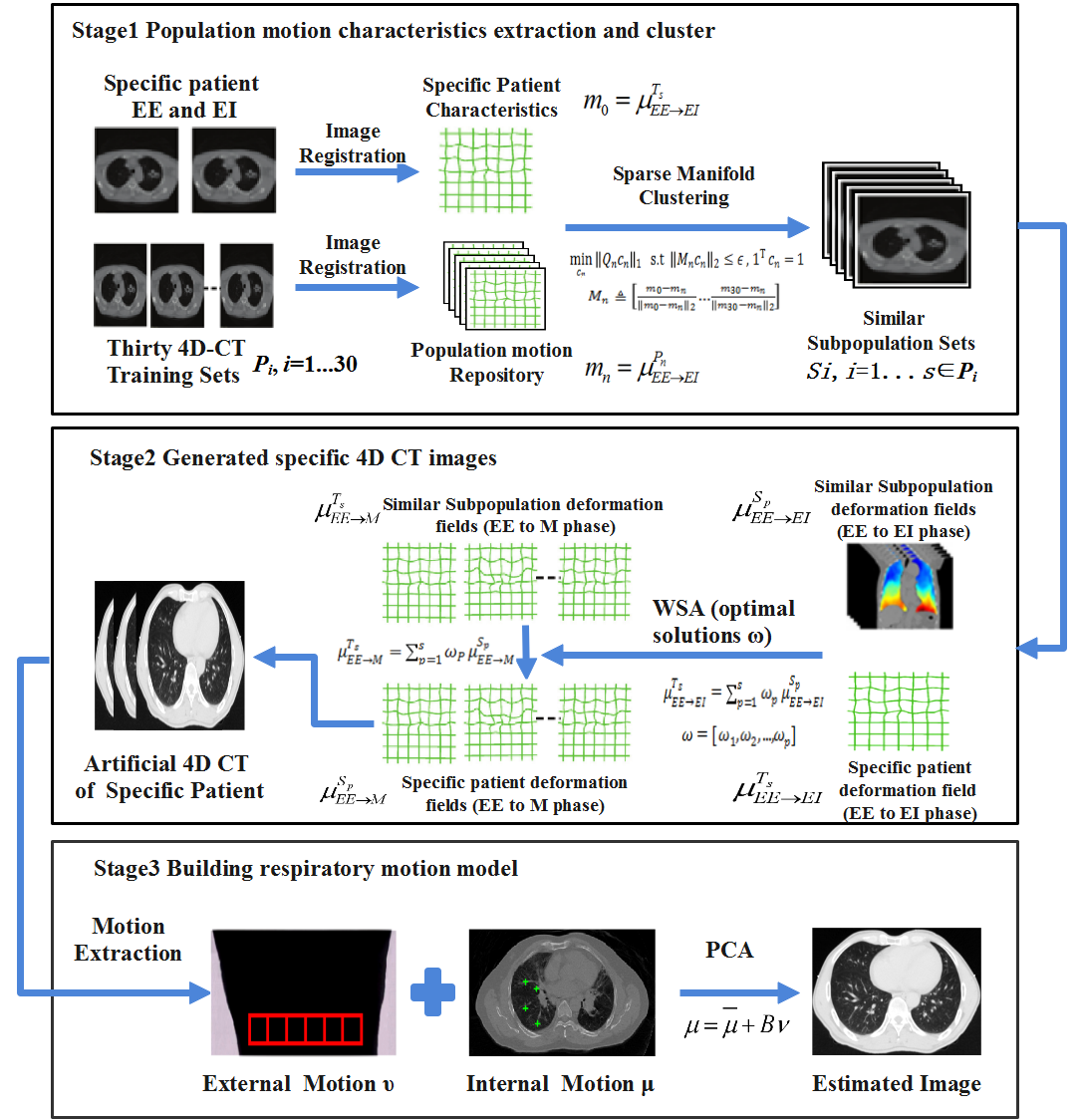
A research team led by Prof. LI Hai from the Hefei Institutes of Physical Science of the Chinese Academy of Sciences, has developed a new model that can accurately predict lung motion caused by breathing, offering safer and more precise options for lung biopsies and radiotherapy.
The findings were published in Computerized Medical Imaging and Graphics.
Lung motion during breathing poses a significant challenge in lung cancer treatment, as tumors can shift, making it difficult for doctors to target them accurately. Existing solutions either rely on population-based models that neglect individual differences or require four-dimensional computed tomography (4D CT) scans, which expose patients to additional radiation.
To overcome these limitations, the team introduced a novel model Characteristic Weighted Sparse (PCWS), which blends general breathing patterns from large datasets with personalized patient information. Remarkably, the model only needs two standard CT scans—eliminating the need for 4D imaging.
In validation tests using data from multiple hospitals, PCWS achieved a mean prediction error of just 0.20 mm, demonstrating high accuracy across a variety of patient types and imaging conditions.
"This new approach could help doctors plan and perform lung cancer procedures more safely, with less radiation and greater accuracy," said Prof. LI Hai.
The model represents a promising step toward personalized, low-risk treatment planning in lung cancer care.

The workflow of our proposed respiratory motion modeling (Image by WANG Tengfei)